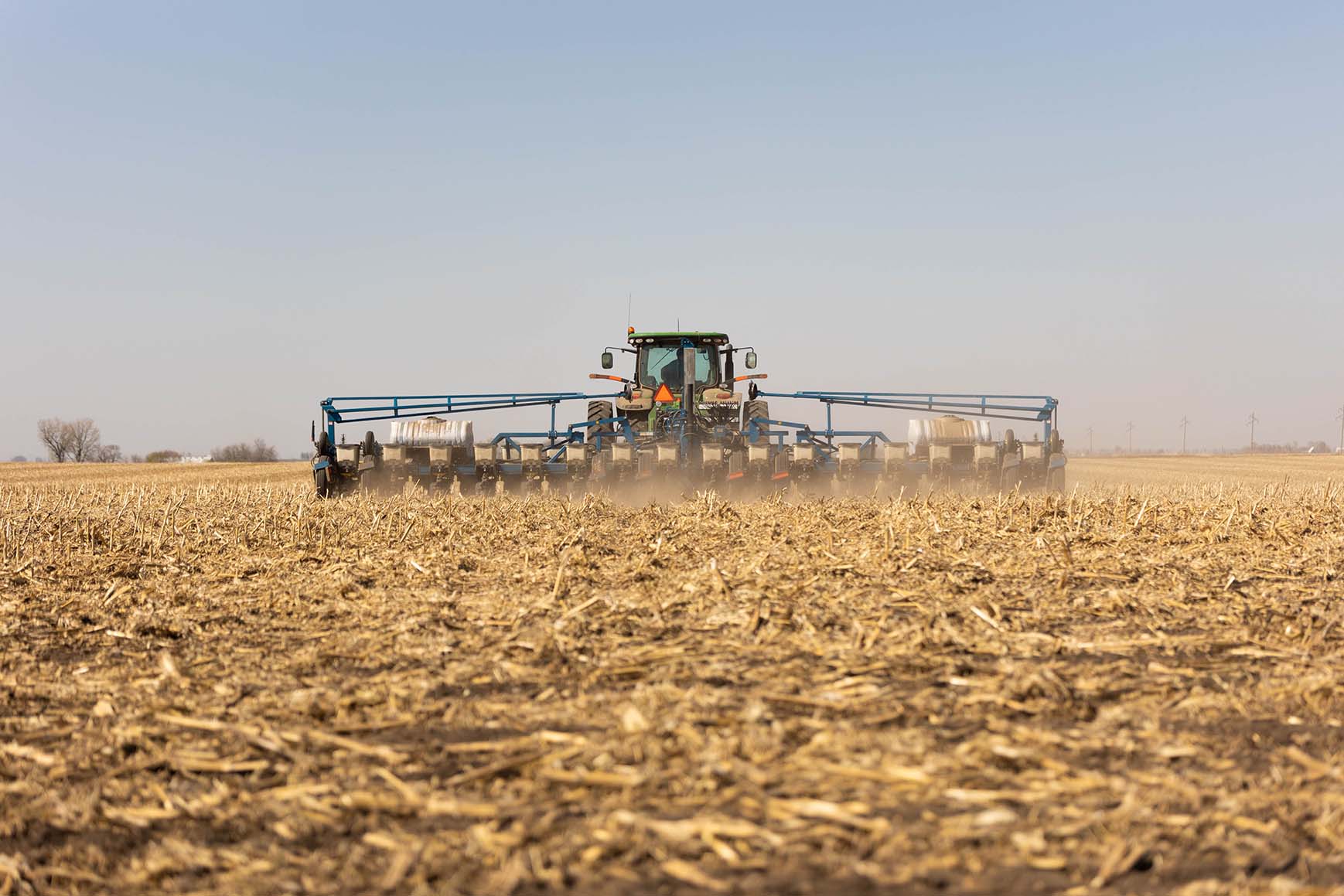
Being mindful of planting conditions this spring can pave the way to a successful harvest this fall. (Photo: Iowa Soybean Association/Joclyn Bushman).
Successful harvests start in the spring
April 2, 2025 | Kriss Nelson
The countdown to planting begins with April's arrival, and farmers could start next week if conditions are favorable.
Before pulling those planters into the field, consider these spring planting tips to better set yourself up for success this fall.
Crop insurance dates
The 2025 corn planting season, as per federal crop insurance, begins no earlier than April 10. For soybeans, the earliest federal crop insurance planting date is April 10 for southern counties and April 15 for the rest of the state.
The final planting dates for Iowa are May 31 for corn and June 15 for soybeans.
Seed treatments
Seed treatments offer early-season pest and disease protection, improved germination and emergence as well as potential yield increases while reducing the need for later treatments.
Shane Beck, Iowa Soybean Association (ISA) research agronomist, says besides protecting the seed while it is still in the ground, farmers are using seed treatments to help combat Sudden Death Syndrome (SDS) and Soybean Cyst Nematode (SCN).
Beck says both ILeVO and Saltro seed treatments are designed to target SDS and SCN.
You can find more information and research on using seed treatments to help the fight against SCN on page 14 of ISA’s Research Center for Farming Innovation’s (RCFI) 2024 Insights Report.
Planting conditions
Even and timely emergence results from planting seeds in warm, dry soil with good seed-to-soil contact.
“You don’t want to plant while the soil is still wet,” says Beck. “We saw that problem last year. Farmers planted in wet soils and stands suffered.”
It’s ideal to plant when soil temperatures are 50 degrees and trending warmer. To track soil temperatures in your county, check Iowa State University’s soil temperature website, which provides four-inch-level soil temperatures.
A planting depth of 1 1/2 inches puts soybeans in soil temperatures that should be uniform. Most literature advises planting corn at a depth of 1 1/2 to 1 3/4 inches. A deeper planting depth of two inches could be more beneficial.
“Deeper planting allows for more productive brace roots than shallower planting,” says Beck. “As for both corn and soybeans, this allows all the seeds to sprout and grow evenly, and the topsoil also functions as a buffer, shielding the seed from some spring temperature fluctuations.”
Beck also advises getting out of the tractor and checking what is happening behind you.
“You need to check to see how the planter is performing a few times in each field,” he says. “Especially if we have varying soil conditions. As it dries, you may need to adjust to planting deeper.”
Seeding rates
Beck says farmers can expect a 20- to 25% reduction in seed population rates versus a final stand. For example, a seeding rate of 120,000 to 125,000 seeds per acre will likely have a final stand of nearly 100,000 plants per acre.
To learn more about 2024 seed population trial results and how to maximize your seed’s potential, refer to page six of RCFI’s 2024 Insights Report.
Cover crop termination
Beck says to err on the side of caution when planning to terminate cover crops this spring.
“Be aware of the weather forecast and if it looks like it is going to be a wet spring, you may want to terminate your cover crops earlier versus later,” he says. “Last year, conditions got wet, the cover crop got out of control causing some issues.”
Another option is planting green; however, for first-timers, Beck suggests a smaller-scale approach instead of using all available acreage.
RCFI’s 2024 Insights report, page 22, offers additional information regarding cover crop termination.
Back